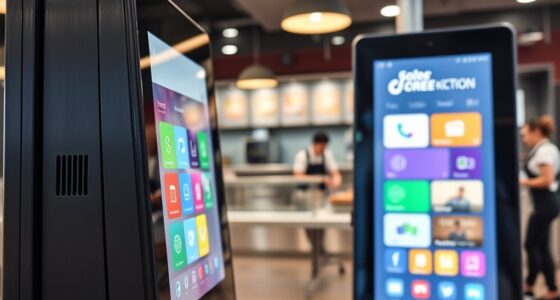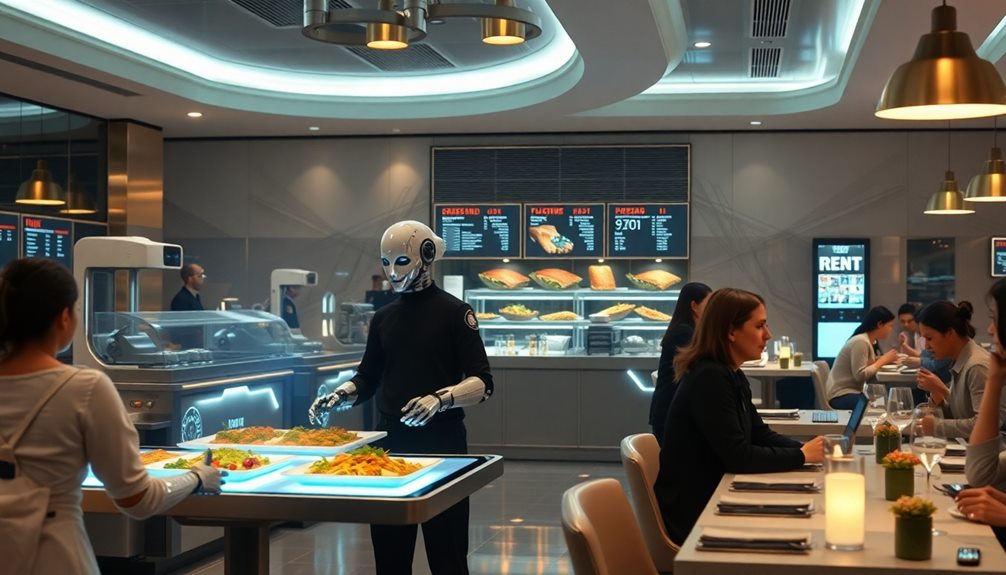Ghost kitchen expansion is slowing because the market has become saturated, making it harder for new kitchens to stand out. Rising operational costs, supply chain issues, and shifting consumer preferences toward in-person dining and healthier options also play a role. Additionally, the virtual-only model makes it tough to build loyalty and differentiate brands. Economic uncertainties and inflation add to the challenges, leading many entrepreneurs to pause or scale back growth—discover why this trend continues by exploring further.
Key Takeaways
- Market saturation and intense competition make it harder for new ghost kitchens to stand out and grow.
- Rising operational costs and supply chain disruptions squeeze profit margins, limiting expansion opportunities.
- Strict regulatory and zoning laws delay permits and restrict location choices for new kitchens.
- Operating solely online hampers brand differentiation and customer loyalty, reducing the incentive to expand.
- Economic uncertainties and inflation lead to cautious spending, delaying or scaling back new kitchen investments.
Market Saturation and Increased Competition
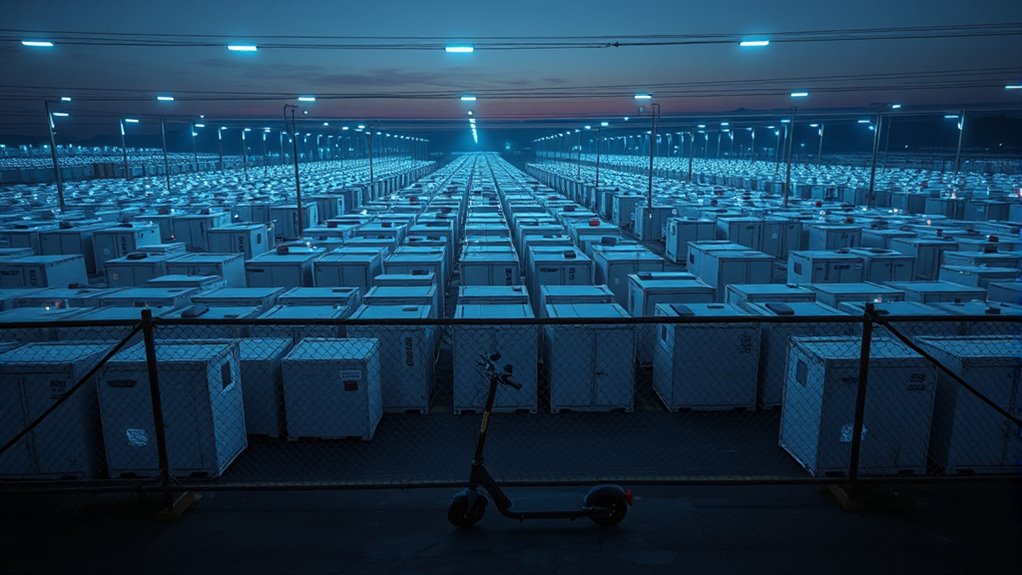
As more companies enter the ghost kitchen market, saturation has become a major hurdle. You might notice that new kitchens pop up constantly, making it harder to stand out. The crowded landscape means consumers have plenty of options, leading to increased competition for orders. This saturation drives down profit margins and makes it difficult to achieve sustainable growth. Smaller or newer operators struggle to gain visibility when big brands dominate the space. As a result, many ghost kitchens find themselves fighting for attention rather than expanding. You may also see some kitchens closing or consolidating, as the market reaches a point where growth slows and competition intensifies. This environment forces operators to differentiate themselves to stay competitive. Additionally, the market is experiencing shifts as some operators are exploring grocery savings strategies to diversify revenue streams and mitigate the challenges of competition.
Rising Operational Expenses
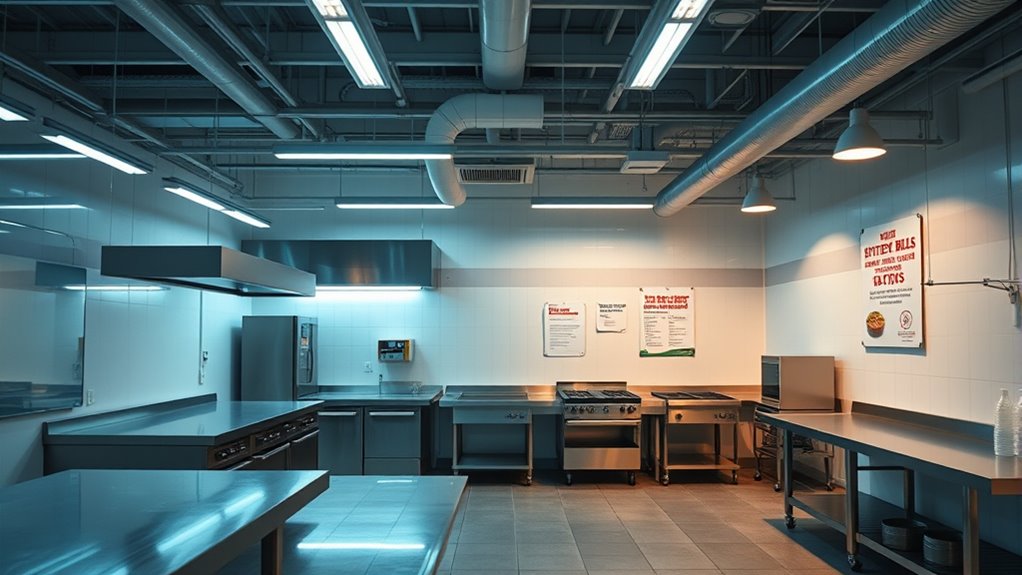
Rising operational expenses are increasingly squeezing profit margins for ghost kitchens. You face higher costs for ingredients, which fluctuate due to supply chain disruptions and inflation. Labor expenses also climb as wages increase and staffing becomes more challenging. Additionally, rent for commercial kitchen spaces remains high, especially in prime locations, cutting into your bottom line. Utilities like water, electricity, and gas are more expensive, adding to overhead. You might also encounter increased costs for technology, delivery fees, and packaging materials. These mounting expenses mean you need higher sales volumes to stay profitable. As costs rise across the board, maintaining margins becomes tougher, forcing you to either raise prices or accept slimmer profits, which can slow your expansion plans. Furthermore, investing in quality equipment such as home theatre projectors can add to initial setup costs, impacting your overall budget and growth strategy.
Consumer Preferences and Dining Habits Shift
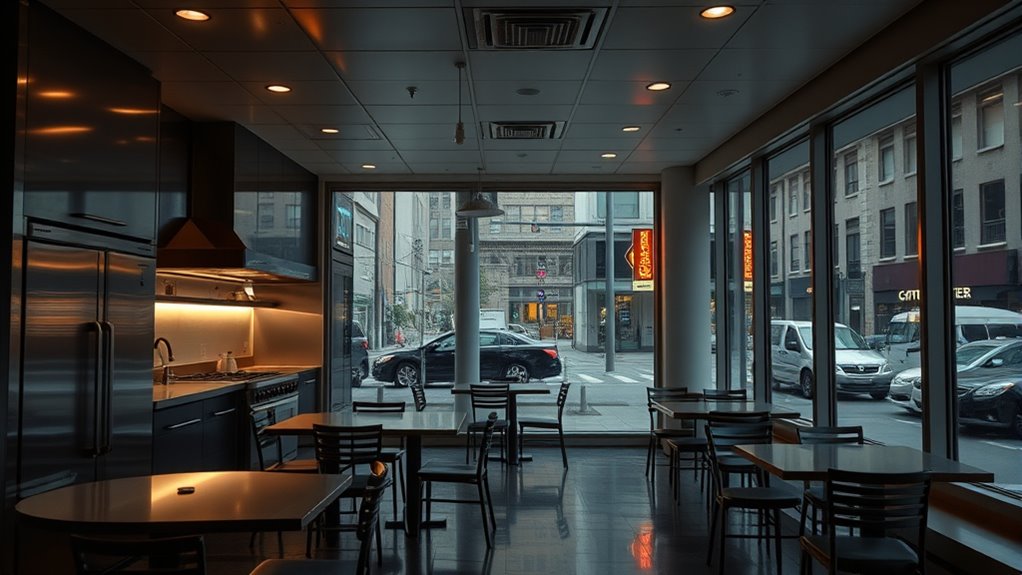
You might notice that many consumers still prefer eating in person rather than ordering out. At the same time, more people are trying meal kits to cook at home, changing how often they dine out. Additionally, there’s a rising demand for healthier options, influencing how restaurants and kitchens adapt their menus. Incorporating eye patch benefits into self-care routines reflects a broader trend of seeking quick, effective solutions for personal wellness.
Preference for In-Person Dining
Many consumers now prefer dining in person rather than ordering from ghost kitchens, reflecting a shift in their habits and priorities. This change is driven by a desire for authentic experiences, social connection, and the ambiance that takeout simply can’t provide.
- You crave the lively atmosphere and the chance to connect with friends face-to-face, making meals more memorable.
- You seek quality and freshness that often get lost in delivery or takeout, wanting to enjoy your food at its peak.
- You value the sensory experience—sights, smells, and sounds—that enhance your enjoyment and create a sense of belonging.
This shift means many see in-person dining as more meaningful, making ghost kitchens less appealing for those seeking genuine, shared moments.
Rise of Meal Kits
As consumers seek more control and convenience in their dining experiences, meal kits have gained popularity as a flexible alternative to traditional takeout and in-person dining. You can skip the grocery store trips and get pre-portioned ingredients delivered right to your door, making meal preparation simpler and less stressful. Meal kits appeal to your desire for fresh, home-cooked meals without the hassle of planning or shopping. They also allow you to experiment with new recipes and cuisines in the comfort of your own kitchen. This trend reflects a shift in your dining habits toward more personalized, convenient options that fit busy schedules. Additionally, the rise of diversification in meal options helps cater to various dietary preferences and cultural tastes, further fueling the popularity of meal kits. Many see meal kits as a way to maintain variety and quality without sacrificing time or control.
Shift Toward Healthy Choices
The growing popularity of meal kits has encouraged you to prioritize healthier ingredients and cooking methods at home. This shift isn’t just about convenience but a desire to take control of your well-being. You’re now more conscious of what you eat, seeking options that promote vitality and longevity. Additionally, the rise of electric bike conversion kits reflects a broader consumer interest in sustainable and active lifestyles, further emphasizing the move toward health-conscious choices.
Here are three ways this change impacts the industry:
- *Demand for nutritious menus increases*, pushing restaurants to offer healthier choices.
- *Consumers avoid heavily processed foods*, opting for fresh, whole ingredients.
- *Dining habits become more mindful*, focusing on quality over quantity.
This shift challenges ghost kitchens to adapt quickly, as customer preferences now lean toward wellness-focused options. Your choices influence a broader movement toward healthier living, transforming how food providers operate and innovate.
Challenges in Brand Differentiation
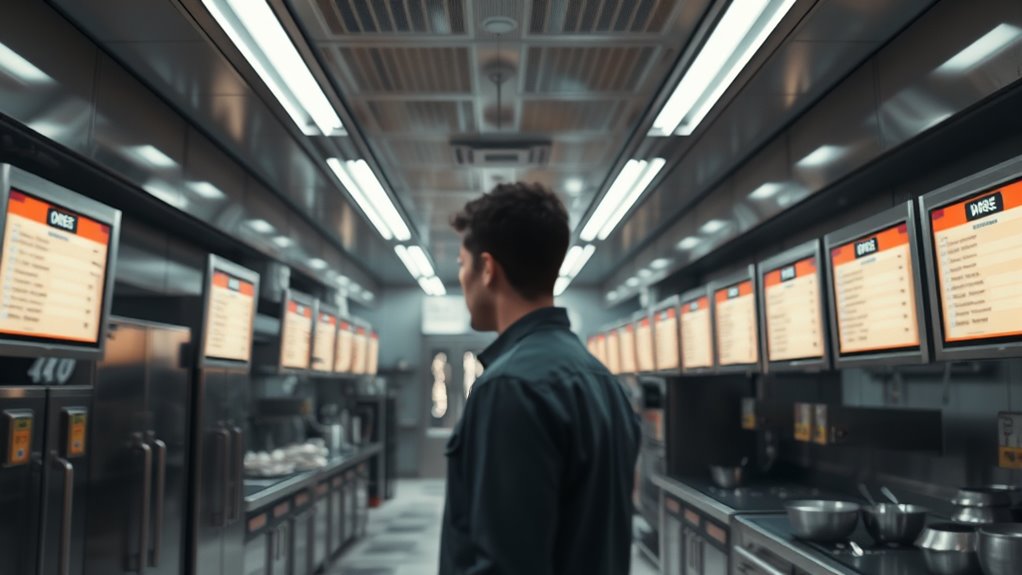
With the rise of numerous ghost kitchens, standing out among competitors has become increasingly difficult. Since most brands operate solely online, your ability to create a memorable identity is limited to digital presence and menu offerings. You can’t rely on physical locations or in-store experiences to differentiate yourself. Instead, you must focus on your branding, packaging, and marketing strategies to catch customers’ attention. However, many ghost kitchens use similar branding elements, making it harder to stand out. You also face the challenge of maintaining consistency across multiple platforms and delivery apps. Without a physical storefront, building customer loyalty becomes tougher, and your brand’s personality may get lost in the crowd. Ultimately, standing out requires innovation, clear messaging, and strategic branding to carve a unique space. Additionally, understanding the financial impact of industry trends can help inform your growth strategies to stay competitive.
Economic Uncertainty and Inflation Effects
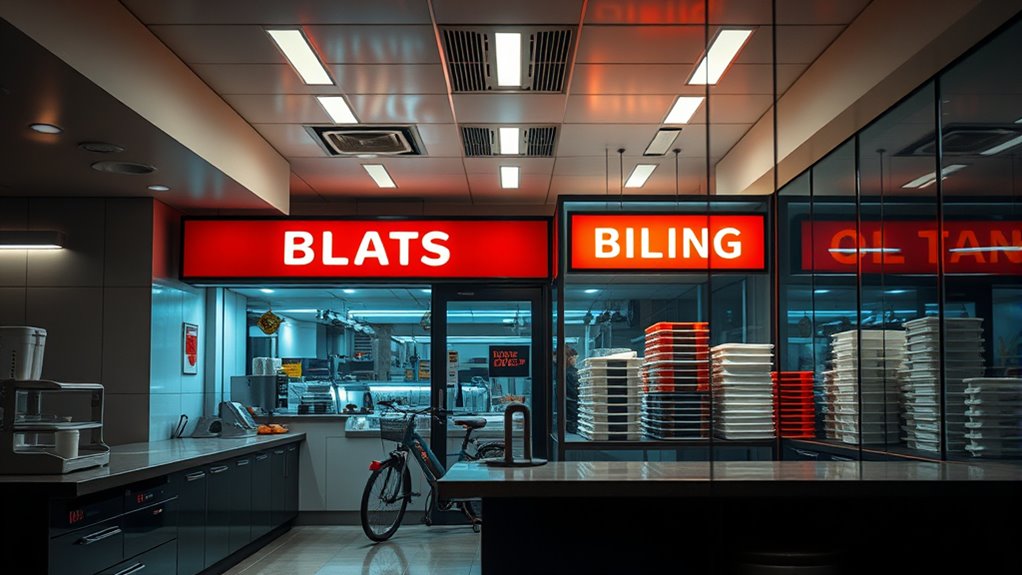
Economic uncertainty and rising inflation rates are causing many ghost kitchens to tighten their budgets and rethink expansion plans. You might feel the pressure of higher food costs, increased labor expenses, and unpredictable market conditions. These factors make it harder to justify new investments or large-scale growth. You could experience:
- Fewer new kitchen openings due to financial risk and cautious spending.
- Cutbacks on marketing and innovation as budgets shrink, impacting competitiveness.
- Delayed expansion plans as uncertainty makes long-term commitments risky.
This environment leaves you questioning whether now is the right time to grow or if sticking to existing operations is the smarter move. The economic landscape is forcing you to adapt quickly and prioritize stability over rapid expansion. Regularly assessing and adjusting your operations can help manage clutter buildup and maintain efficiency during uncertain times.
Regulatory and Zoning Hurdles

As you seek to expand your ghost kitchen operations, moving through complex regulatory and zoning requirements can become a significant obstacle. Local governments often have strict rules about where food preparation facilities can operate, especially in urban or residential areas. You may face lengthy approval processes, requiring detailed permits and inspections that delay your plans. Zoning laws can restrict the types of businesses allowed in certain districts, forcing you to relocate or redesign your setup. Additionally, compliance with health and safety standards demands ongoing adjustments to meet changing regulations. Steering through these hurdles consumes time and resources, often discouraging expansion efforts. Without careful planning and local engagement, regulatory and zoning challenges can stall your growth and limit your ability to capitalize on market opportunities. Understanding zoning laws and staying informed about evolving policies can help you navigate these barriers more effectively.
Impact of Supply Chain Disruptions

Supply chain disruptions are increasingly impacting ghost kitchen growth, compounding the challenges posed by regulatory and zoning hurdles. You might find yourself facing ingredient shortages, delayed deliveries, and rising costs that threaten your operations. These disruptions can cause frustration, forcing you to scramble for substitutes or adjust menus unexpectedly. The uncertainty can erode customer trust and hurt your reputation.
Supply chain issues threaten ghost kitchen success, causing shortages, delays, and rising costs that frustrate customers and harm reputation.
Here are some ways supply chain issues hit hard:
- Ingredient shortages that limit your menu options and frustrate customers.
- Delayed deliveries that lead to missed orders and unhappy clients.
- Rising costs that squeeze your profit margins and threaten sustainability.
If these disruptions persist, they could stall your growth and make success feel further out of reach.
Limitations of Virtual Presence in Building Loyalty
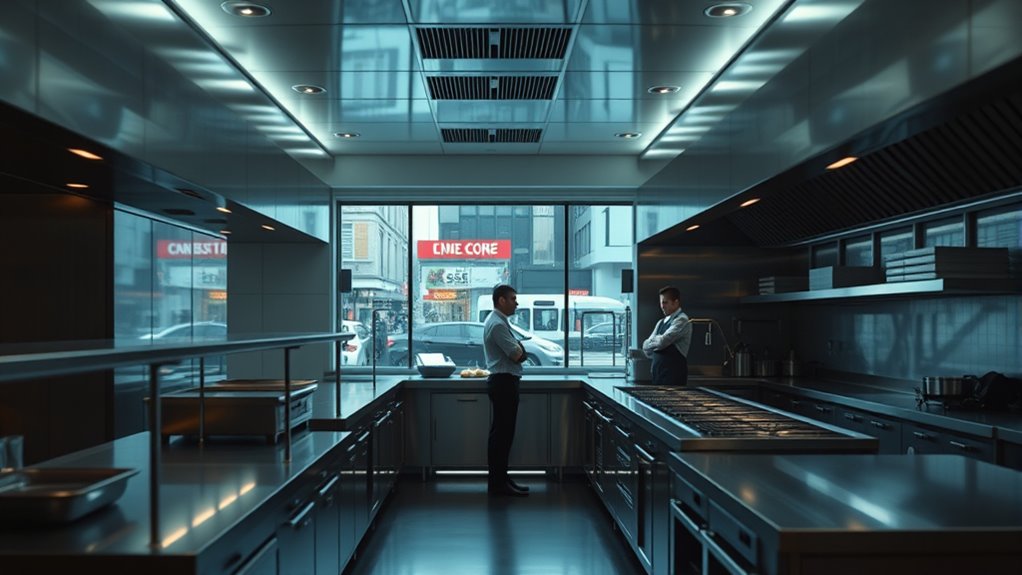
While virtual presence allows ghost kitchens to reach a wider audience and operate with lower overhead, it often falls short in fostering genuine customer loyalty. Without face-to-face interactions, you miss out on building personal connections that encourage repeat business. Relying solely on digital touchpoints makes it harder to create trust and emotional bonds with your customers. You may see initial orders, but converting those into loyal patrons remains a challenge. Customers might try your food once but lack the motivation to return if they don’t feel a sense of familiarity or engagement. Additionally, limited direct feedback makes it difficult to understand their preferences or resolve issues promptly. Bank SWIFT/BIC codes can facilitate secure financial transactions, but they don’t directly support building customer loyalty. As a result, virtual presence alone often isn’t enough to sustain long-term loyalty, especially in a competitive market.
Investment Fatigue Among Entrepreneurs
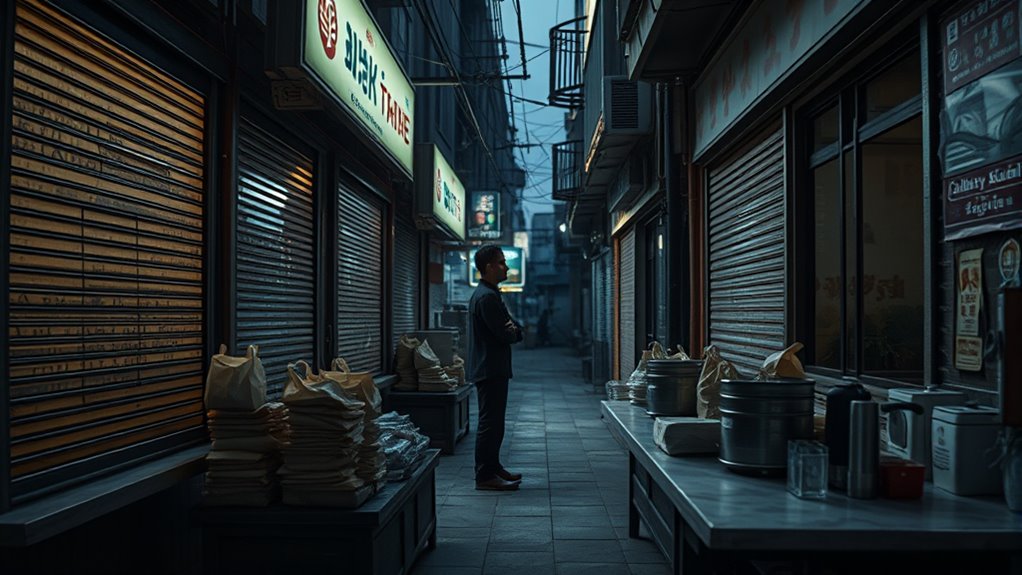
Despite the potential for virtual presence to expand reach, many entrepreneurs find themselves facing investment fatigue. The constant need to pour money into marketing, technology upgrades, and delivery logistics drains your enthusiasm and resources. You might feel overwhelmed by escalating costs with little immediate return. This situation mirrors the broader challenges of maintaining system security, which requires ongoing effort and resource allocation. Here are three signs of this fatigue:
- Waning motivation to innovate after repeated investments that don’t pay off
- Doubt about long-term profitability as expenses pile up without clear growth
- Loss of confidence in the industry’s future, leading to hesitation or withdrawal
This exhaustion can cause entrepreneurs to slow down or even halt expansion plans, fearing that further investment might only deepen their financial struggles.
Future Outlook and Potential Industry Transformations
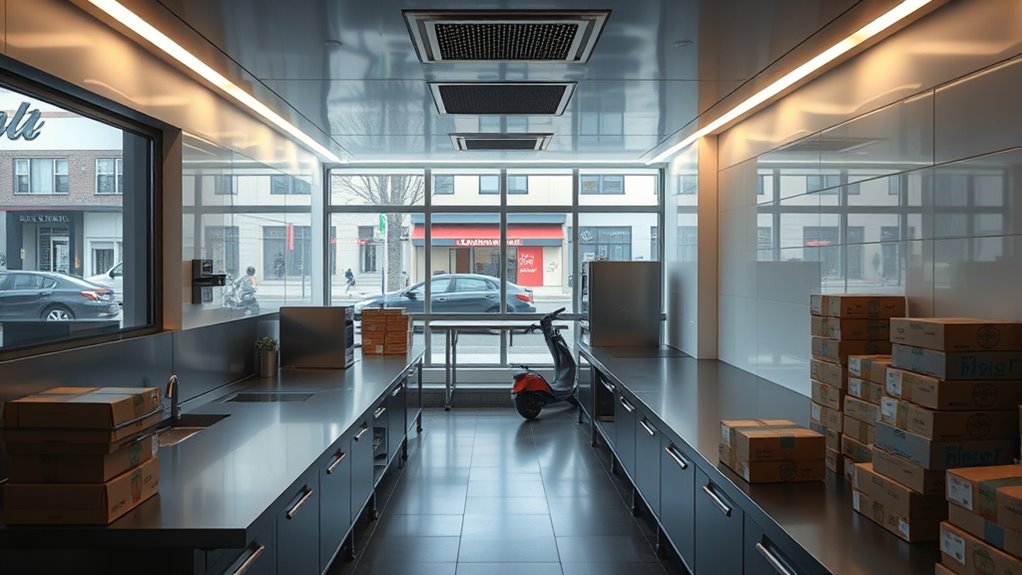
As the industry faces growing investment fatigue, the future of ghost kitchens hinges on innovative adaptations and strategic shifts. You’ll see operators focusing on cost efficiency, leveraging technology to optimize operations and reduce overheads. Data-driven insights will guide menu development, marketing, and delivery routes, making each kitchen more agile and profitable. Partnerships with grocery stores or virtual brands could diversify revenue streams, while consolidations might create larger, more resilient networks. Sustainability will also play a bigger role, with eco-friendly practices becoming a competitive advantage. Overall, the industry will evolve toward smarter, more integrated models that prioritize customer experience and operational resilience. If you adapt quickly, you’ll be positioned to thrive in this shifting landscape and capitalize on emerging opportunities.
Frequently Asked Questions
How Do Ghost Kitchens Affect Traditional Restaurant Jobs?
You might wonder how ghost kitchens impact traditional restaurant jobs. They often reduce the need for front-of-house staff like servers and hosts because customers order online. At the same time, these kitchens create new roles behind the scenes, such as delivery and kitchen staff. Overall, while some jobs decline, others emerge, shifting the nature of employment in the restaurant industry. Your job prospects may change, but opportunities evolve too.
What Technological Innovations Could Revitalize Ghost Kitchen Growth?
When you look at ways to revitalize ghost kitchen growth, you’ll find technology is the secret sauce. Innovations like AI-powered order management, virtual reality for customer engagement, and drone deliveries can give you a competitive edge. These tools streamline operations, cut costs, and attract more customers. If you play your cards right, you can turn the tide and reignite growth, proving that technology truly is a game-changer in this industry.
Are There Demographic Groups Less Affected by the Slowdown?
You might find that younger demographics, like Millennials and Gen Z, are less affected by the slowdown. They tend to prioritize convenience and digital ordering, which keeps ghost kitchens relevant for them. Additionally, urban residents with busy lifestyles and higher disposable incomes still rely on these services. If you target these groups, you could experience steadier demand, even as overall expansion slows.
How Do Environmental Concerns Impact Ghost Kitchen Operations?
Environmental concerns influence your ghost kitchen operations by pushing you to adopt eco-friendly practices, like sustainable packaging and energy-efficient equipment. You’re likely to face increased pressure from customers and regulators to reduce waste and lower carbon footprints. This can add costs but also opens opportunities for differentiation. By prioritizing eco-conscious choices, you can appeal to environmentally aware consumers and build a reputation for sustainability, ultimately benefiting your business long-term.
Could Ghost Kitchens Pivot to New Business Models?
Could ghost kitchens boldly break boundaries by pivoting to new business models? Absolutely. You can explore innovative ideas like subscription meal services, virtual dining experiences, or eco-friendly packaging solutions. By blending creativity with customer needs, you’ll position your ghost kitchen for growth. Think outside the box—adapt, evolve, and expand your offerings to meet changing demands and seize fresh opportunities in the food industry’s fast-paced future.
Conclusion
Like a crowded street nearing capacity, the ghost kitchen industry faces slowing growth due to market saturation, rising costs, and shifting consumer habits. You might feel enthusiastic about its potential, but these hurdles create a bumpy road ahead. As competition intensifies and challenges mount, it’s clear that sustained expansion isn’t guaranteed. Staying adaptable and innovative will be your best tools to navigate this evolving landscape, ensuring you don’t get lost in the crowd.



